Minerals
Minerals are naturally occurring inorganic solids with a definite chemical composition and a crystalline structure. They are the building blocks of rocks and are composed of elements such as oxygen, silicon, aluminum, iron, calcium, and sodium, among others.
Properties of Minerals
- Definite Chemical Composition: Each mineral has a specific chemical formula that determines its composition.
- Crystalline Structure: Minerals have a specific arrangement of atoms that form a crystalline structure, giving them a unique shape.
- Hardness: The resistance of a mineral to scratching is known as hardness. It is measured on the Mohs scale, with diamond being the hardest mineral at 10.
- Luster: Refers to the way light is reflected from the surface of a mineral. It can be metallic or non-metallic.
- Color: While not always a reliable indicator, some minerals have characteristic colors due to their chemical composition.
- Cleavage and Fracture: Some minerals break along smooth, flat surfaces (cleavage), while others break unevenly (fracture).
- Specific Gravity: The ratio of the weight of a mineral to the weight of an equal volume of water. It gives an indication of the density of the mineral.
Classification of Minerals
Minerals are classified into groups based on their chemical composition. The major groups are:
- Silicates: The largest and most important group, containing silicon and oxygen, along with other elements.
- Carbonates: Minerals containing the carbonate ion (CO3) combined with metal ions such as calcium and magnesium.
- Oxides: Minerals composed of oxygen and a metal, such as hematite (Fe2O3) and magnetite (Fe3O4).
- Sulfides: Minerals containing sulfur combined with a metal, such as pyrite (FeS2) and galena (PbS).
- Sulfates: Minerals containing the sulfate ion (SO4) combined with metal ions, such as gypsum (CaSO4•2H2O).
Uses of Minerals
Minerals have numerous uses in everyday life. Some common uses include:
- Building materials: Minerals like granite, limestone, and sandstone are used in construction.
- Metals and alloys: Ores such as iron, copper, and aluminum are extracted from minerals for use in manufacturing and industry.
- Gemstones: Certain minerals, such as diamond, ruby, and sapphire, are prized for their beauty and used in jewelry.
- Fertilizers: Minerals like phosphate and potash are essential for agricultural fertilizers.
- Technology: Minerals like quartz and mica are used in electronic devices and communication technology.
Studying Minerals
To study minerals effectively, it's important to:
- Understand their physical and chemical properties.
- Learn to identify minerals based on their characteristics.
- Be familiar with the classification and uses of different minerals.
- Practice mineral identification using tools like hardness picks, streak plates, and acid tests.
- Explore the formation and occurrence of minerals in different geological settings.
By understanding the properties, classification, and uses of minerals, we gain insight into the Earth's composition and the essential role minerals play in our lives.
[Mineral] Related Worksheets and Study Guides:
.◂Science Worksheets and Study Guides Eighth Grade. Plate tectonics
Study Guide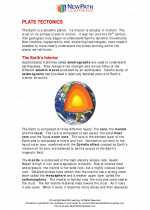 Plate tectonics
Plate tectonics  Activity Lesson
Activity Lesson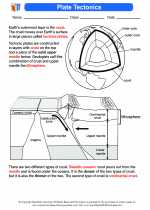 Plate Tectonics
Plate Tectonics  Worksheet/Answer key
Worksheet/Answer key Plate tectonics
Plate tectonics  Worksheet/Answer key
Worksheet/Answer key Plate tectonics
Plate tectonics  Worksheet/Answer key
Worksheet/Answer key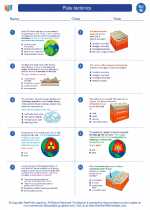 Plate tectonics
Plate tectonics  Worksheet/Answer key
Worksheet/Answer key Plate tectonics
Plate tectonics  Vocabulary/Answer key
Vocabulary/Answer key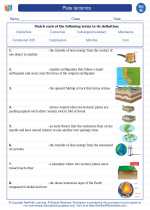 Plate tectonics
Plate tectonics  Vocabulary/Answer key
Vocabulary/Answer key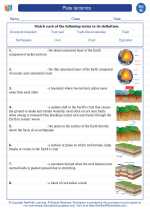 Plate tectonics
Plate tectonics  Vocabulary/Answer key
Vocabulary/Answer key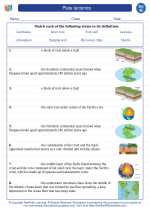 Plate tectonics
Plate tectonics  Vocabulary/Answer key
Vocabulary/Answer key Plate tectonics
Plate tectonics  Vocabulary/Answer key
Vocabulary/Answer key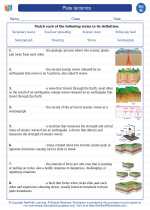 Plate tectonics
Plate tectonics  Vocabulary/Answer key
Vocabulary/Answer key Plate tectonics
Plate tectonics  Vocabulary/Answer key
Vocabulary/Answer key Plate tectonics
Plate tectonics 

 Activity Lesson
Activity Lesson
 Worksheet/Answer key
Worksheet/Answer key
 Worksheet/Answer key
Worksheet/Answer key
 Worksheet/Answer key
Worksheet/Answer key
 Worksheet/Answer key
Worksheet/Answer key
 Vocabulary/Answer key
Vocabulary/Answer key
 Vocabulary/Answer key
Vocabulary/Answer key
 Vocabulary/Answer key
Vocabulary/Answer key
 Vocabulary/Answer key
Vocabulary/Answer key
 Vocabulary/Answer key
Vocabulary/Answer key
 Vocabulary/Answer key
Vocabulary/Answer key
 Vocabulary/Answer key
Vocabulary/Answer key
